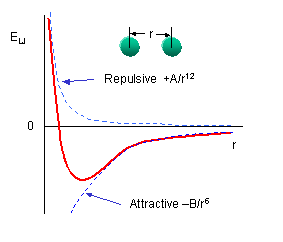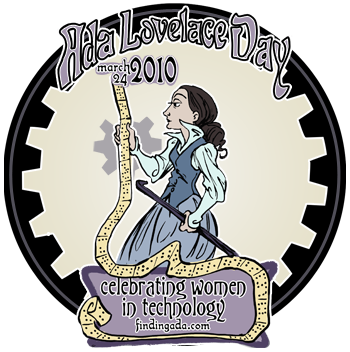 Andy Revkin has a problem. Actually he has several.
Andy Revkin has a problem. Actually he has several.
Ethon and Eli were sitting around popping liver in the microwave (messy, messy) when the subject of wither Dot Earth bubbled up. Andy was the "lead" science reporter at the New York Times, but took a buyout in December 2009. Ethon, who is pretty sharp with the numbers noticed that Andy's new home base, Pace University, has some really nice roosts but the Academy for Applied Environmental Studies, where he is Senior Fellow for Environmental Understanding, has the stink of a soft money operation, which means no tenure and little, if any, direct funding from the University. You teach a course, on line or off, you get capitation. You want to support your salary, you got a hunting license, but that means you need land to hunt on and something to flush the game. Ethon, of course, was eager to offer his services. He hears there are some nice pickings, and he is sure he could flush a phoning Pielke or two.
In his new situation, Revkin needs visibility. Dot Earth is some of the best real estate in the blog universe and evidently the Times has given Andy squatting rights. What happens when the Times goes subscription again in 2011 might be another story so everything has to be in place by then, especially if he has to decamp for a new site, and maybe without the moniker.
Revkin trained as a reporter and sees himself as an intermediary. From his years as the NY Times' science honcho, Revkin has built a power address book. IEHO Revkin wants to position Dot Earth as a place where scientists and the public meet, where he can bring in a wide variety of scientists and policy people and they can interact with those who inhabit the comments. To Eli, he is less interested in controlling the discourse than at hosting it and identifying where the hot action is.
In contrast, Real Climate's owner operators see their job as explaining climate science to the readers.
RealClimate is a commentary site on climate science by working climate scientists for the interested public and journalists. We aim to provide a quick response to developing stories and provide the context sometimes missing in mainstream commentary. The discussion here is restricted to scientific topics and will not get involved in any political or economic implications of the science. All posts are signed by the author(s), except ‘group’ posts which are collective efforts from the whole team. This is a moderated forum.
Eli? Eli is in it for the carrots.
Revkin's dilemma is that he needs to maintain access to the scientists while attracting the broadest possible crowd. His balancing act is wearing thin. The Yale Forum had a fairly long article about the problems
Revkin will have in Second Life
That is decidedly not how pro-climate-control advocate Michael Schlesinger of the University of Illinois sees things. He recently did an e-mail blast distributing his e-mail to Revkin specifically trashing Revkin for “gutter reportage” on Dotearth.
“The vibe I’m getting from here, there and everywhere is that your reportage is very worrisome to most climate scientists,” Schlesinger railed in his e-mail to Revkin. “I sense that you are about to experience the ‘Big Cutoff’ from those of us who believe we can no longer trust you, me included,” he wrote.
Like other reporters, Revkin is known to take such criticisms as an affirmation of his journalistic independence. But perhaps more surprising was a recent complaint from mainstream climate scientist Ken Caldeira, of Stanford University and its Carnegie Institution of Washington. Caldeira sometimes draws the scorn of those most committed to strong action on climate change, but few could seriously consider him a climate “skeptic.”
Addressing Revkin about his coverage of the e-mails hacking in a November 21 Times front-page article, Caldeira complained of “about the worst piece of journalism that you have ever published.” He complained that the paper, and Revkin in particular, had taken “a few lines out of context for maximum inflammatory intent.”
Caldeira also equated Revkin to widely quoted climate contrarian Pat Michaels of the Cato Institute, at one point asking Revkin if he had “let yourself be an operative of Pat Michaels. Truly disgusting.”
The problem, of course, is that most of the scientists and their friends and colleagues have been strongly and unfairly attacked by the Pat Michaels (and the you know who elses) of the world and they recognize the flim-flam for what it is. They are not going to take kindly to being asked to play with someone who gives Pat oxygen. The problem is also Eli and his dear friends who have spent the last six or seven years digging the moles out of the ground and do not care to extend what remains of the hand of friendliness after losing a fair amount of flesh.
But forget that, we all get Alzheimers sooner or later. Look at what has happened to dot.earth, currently inhabited by a couple of indefatigable types on both sides who know how to work the ctrl-C, ctrl-V combination. There are visitors, passerbys and others, but the comments have become arthritic: swollen, painful and stiff. Andy is trying to losen this up by interjecting when a commenter becomes, well, imaginative, but he needs to attract another bunch and a greater variety.
The initially promising Climate Feedback died swiftly by dissing what should have been its natural supporters with a set of lamely wanna be contrarian posts by the usual selection of freakoscience posters. Everyone got a bad taste in the beak from that, and has stayed away in droves since.
Now Ethon has a few suggestions. Don't go where the heat is for a while. It's pretty clear that Revkin does not have the depth to see the rocks in the trickster's arguments. Recapture the right crowd, find a new one, get away from climate issues and emphasize environmental ones, at least for a while. Bring in experts on specialized topics and figure out how to get them to converse with the crowd. You probably should show them the flames, but you don't have to publish them. Recognize that, for example, there are a lot of birds out there who want to understand the environmental pressures on their roosts. Use that Rolladex.
In short, do what others can't and you can. At least for the next half year, the emphasis should be on protecting the guests on the Andy Revkin show and establishing a dialog between them and the audience. The goal is that visitors would learn something on every visit.
Oh yeah, most importantly, add Rabett Run to the blogroll.
























